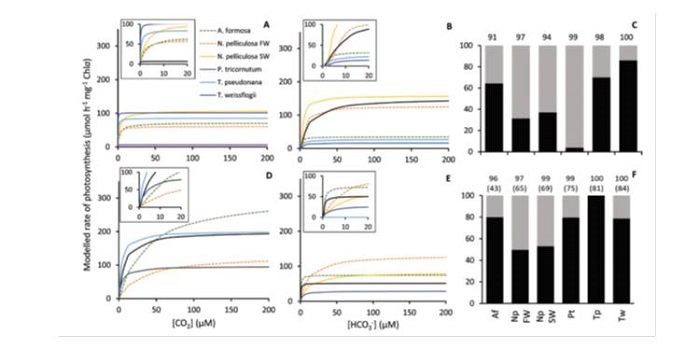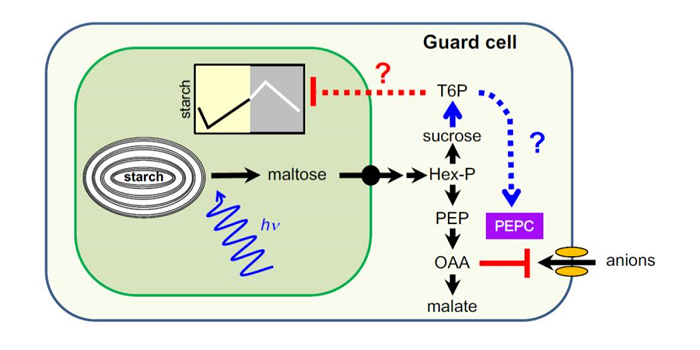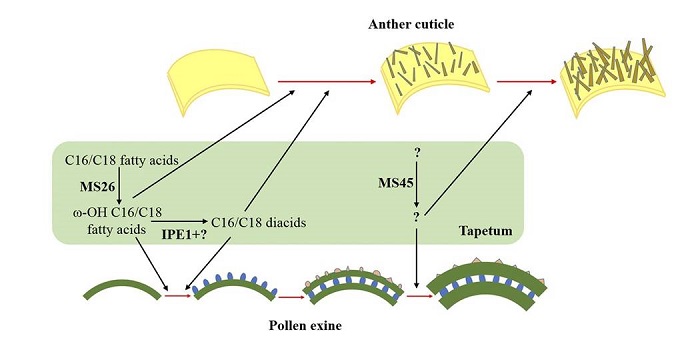
Chasing Scattered Genes: Identifying Specialized Metabolite Pathway Genes through Global Co-expression Analysis
Research, The Plant Cell: In Brief0 Comments
/
Plants produce scores of specialized metabolites (SMs) to attract or repel the organisms around them and to cope with life in a variable environment. For thousands of years, we have been exploiting these compounds to feed, heal, and adorn us. Many more SMs remain to be discovered: the chemical constituents…

Diversity of CO2 concentrating mechanisms and responses to CO2 concentration in marine and freshwater diatoms ($)
Plant Science Research Weekly, ResearchThe CO2-fixing enzyme ribulose bisphosphate carboxylase (Rubisco) works most efficiently at high concentrations of CO2. Many organisms have evolved CO2-concentrating mechanisms (CCMs), such as the PEP-carboxylation that occurs upstream of Rubisco in C4 plants. Diatoms and other eukaryotic algae use a…

Changes in the chloroplastic CO2 concentration explain much of the observed Kok effect: a model ($)
Plant Science Research Weekly, ResearchWhen the uptake of CO2 (A) is plotted against absorbed irradiance (I), at low I there is a noticeable bend that occurs around the light compensation point (I where CO2 release due to mitochondrial respiration is balanced by CO2 uptake by photosynthesis). When the slopes of both parts of the curve are…

Opinion: Increasing crop yield and resilience with trehalose 6-phosphate ($)
Plant Science Research Weekly, ResearchTrehalose 6-phosphate (T6P) is a disaccharide formed from two glucose sugars, and more importantly is a signal of glucose availability and regulator of energy homeostasis. Acting via the protein kinase SnRK1, T6P controls the allocation of carbon, leading the plant down a “feast” (growth) or “famine”…

Review: Mechanisms to mitigate the tradeoff between growth and defense ($)
Plant Science Research Weekly, ResearchIt is widely recognized that defense incurs a cost in terms of reduced growth. Karasov et al. explore the nature of this tradeoff. They observe that rather than tradeoff being driven directly by metabolic competition, it appears to occur upstream through regulatory processes including antagonism between…

Update: Transitory starch metabolism in guard cells: unique features for a unique function
Plant Science Research Weekly, ResearchIn leaf mesophyll cells, some of the sugars produced by photosynthesis are stored as transitory starch, which is then broken down to provide the cells with energy during the night. Recent advances in imaging and staining and the use of mutants have enabled the pattern of accumulation of transitory starch…

A Kinase- and Proteasome-Mediated Link Between Lipid Biosynthesis and Energy Homeostasis
Research, The Plant Cell: In BriefIN BRIEF by Nancy R. Hofmann [email protected]
The economy of living cells includes energy production, energy utilization, and energy storage. Thus, a plant’s energy budget must connect the decision to produce lipids (for energy storage) with its overall energy status. Energy sensor kinases, such…

A phenol-enriched cuticle is ancestral to lignin evolution in land plants
Plant Science Research Weekly, ResearchMoss are non-vascular plants and do not produce the phenolic polymer lignin, but they do have some enzymes associated with the lignin pathway, raising the question of the evolutionary origins of lignin. In angiosperms, the cytochrome P450 enzyme encoded by CYP98 catalyzes the first irreversible step…

IRREGULAR POLLEN EXINE1 Is a novel factor in anther cuticle and pollen exine formation
Plant Science Research Weekly, ResearchChen et al. identified a novel male-sterile Zea mays mutant, named ipe1. Mutant pollen grains show defective development of the tapetum and pollen exine (outer surface), causing microspore abortion. In addition, ipe1 anthers are smooth instead of reticulate, suggesting defects in anther cuticle formation. …

